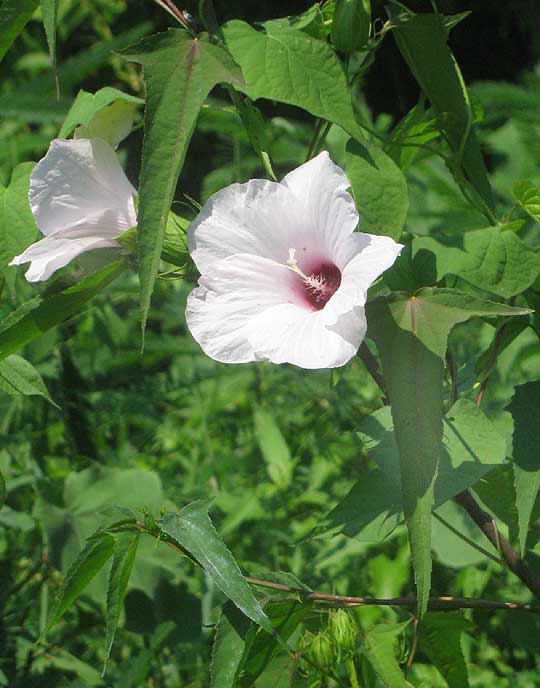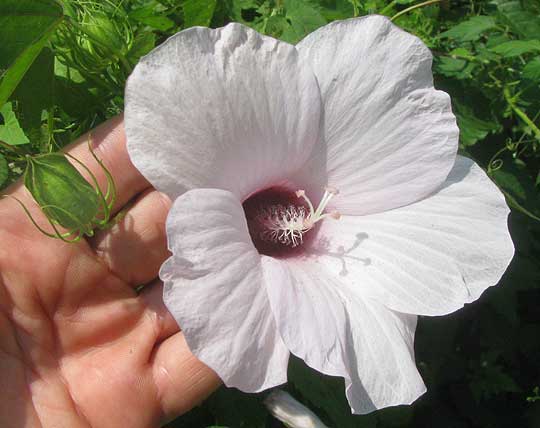Excerpts from Jim Conrad's
Naturalist Newsletter
from the July 1, 2012 Newsletter issued from the woods of the Loess Hill Region a few miles east of Natchez, Mississippi, USA
HALBERDLEAF ROSEMALLOW
In sun-drenched mud and shallow water in the glorious swamps of St. Catherine Creek National Wildlife Refuge just south of Natchez, nowadays a head-high, native species of Hibiscus is spectacularly flowering with pinkish-white, dark-centered, four-inch broad
(10cm) flowers, and distinctive "halberd-shaped" leaves -- with sharp lobes at their bases projecting perpendicularly from the blades' main midveins -- as shown below:

A flower close-up, with the flower bud at the left showing ten or so slender "bractlets" neatly arising at the bud's base and almost enclosing it in a little cage, is shown below:

If you've been with me in the Yucatan you recognize the white, fuzzy structures projecting from the blossom's "eye" as five stigmas atop a slender style (female sexual parts) encircled at its base by a cylinder from which many match-stick-shaped stamens (pollen-producing male parts) bristle like teeth on a bottlebrush. A flower with such anatomy could only belong to the Hibiscus Family, and any flower of such general appearance and beauty could only be a hibiscus flower. This is HIBISCUS LAEVIS, most commonly referred to as the Halberdleaf Rosemallow, which seems like an overkill kind of name when "Swamp Hibiscus" would be more appropriate. However, I don't get to do the naming here.
Halberdleaf Rosemallows are spectacular native species that do well when transplanted into non-swampy soil. In fact, horticulturalists have developed several popular cultivars from it, including a crimson-flowered 'Lord Baltimore,' a pink-flowered 'Pyrenees Pink,' a more purely white 'Everest White,' and a slightly pink 'Sweet Caroline.' They survive in somewhat dry soils but only thrive in moist places.
The species occurs naturally throughout most of the eastern and central US and adjacent Canada.